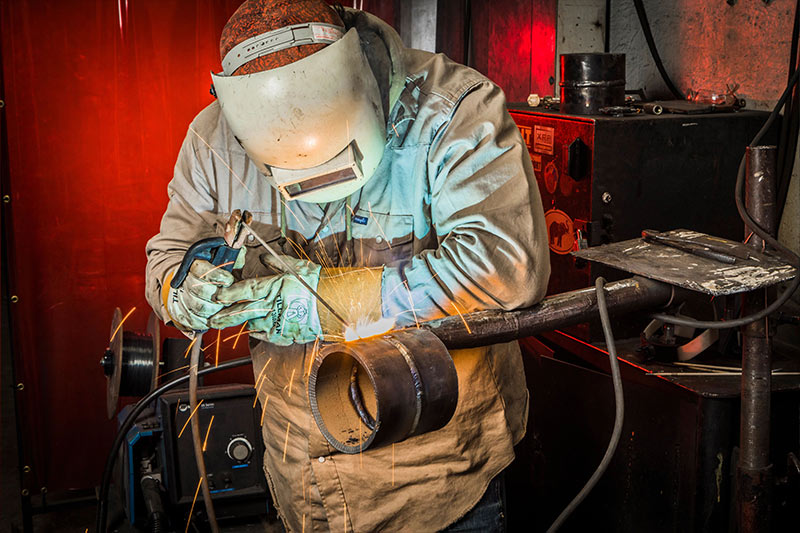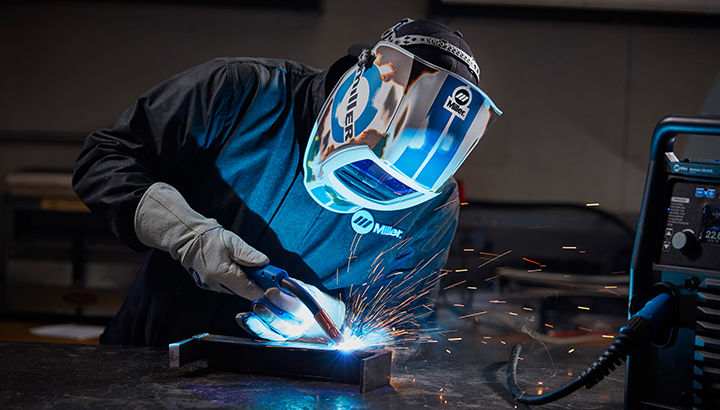Red flags in welding repair and what Belgrade can do about them
Everything about Welding: Secret Insights Into Techniques and Best Practices for Success
Welding encompasses a range of techniques, each suited for specific materials and applications. Understanding these methods, such as GMAW, SMAW, and TIG, is vital for attaining optimal results. Moreover, the ideal tools and safety and security methods can not be ignored. As prep work and fixing play essential duties in the welding process, grasping these aspects can substantially enhance the quality of the end product. What are the crucial elements that ensure a successful weld?
Recognizing Various Welding Techniques
Welding strategies incorporate a variety of methods, each fit to specific applications and products. Amongst one of the most usual methods are Gas Metal Arc Welding (GMAW), Shielded Steel Arc Welding (SMAW), and Tungsten Inert Gas Welding (TIG) GMAW, likewise called MIG welding, is preferred for its speed and convenience, making it suitable for thin products. SMAW, or stick welding, is preferred for its simplicity and performance in exterior environments, particularly with thicker metals. TIG welding provides precision and control, making it ideal for complex job and non-ferrous steels (Montana Mobile Welding and Repair Belgrade Fabrication). Each technique has its special benefits and factors to consider, allowing welders to select the very best method based on the task's needs, product type, and preferred end results. Understanding these strategies is necessary for effective welding
Crucial Welding Tools and Tools
While numerous welding strategies need specific skills, the appropriate equipment and tools are equally necessary for attaining high quality outcomes. Crucial welding equipment includes welding machines, which differ relying on the strategy-- such as MIG, TIG, or stick welding. Safety gear, including safety helmets, handwear covers, and aprons, warranties security and comfort throughout the process. In addition, components and clamps help secure products in place, making certain accuracy in welds. Consumables like welding rods, cable, and securing gas are also vital components that affect the top quality of the weld. Additionally, tools such as cutters and mills assist in surface area preparation and post-weld completing, contributing to an expert result. Investing in high-quality devices ultimately boosts the performance and efficiency of welding projects.
Safety And Security Practices in Welding
Proper safety techniques are crucial in the welding sector to secure employees from potential threats. Welders need to use proper individual safety devices (PPE), consisting of helmets with proper shading, handwear covers, and flame-resistant apparel. Ample air flow is important to minimize exposure to unsafe fumes and gases produced during the welding procedure. In addition, workers should be learnt the correct handling of welding devices to avoid accidents. Fire safety actions, such as keeping combustible products away from the welding area and having fire extinguishers easily available, are essential. Normal evaluations of equipment and work areas can aid identify potential dangers prior to they lead to crashes. By adhering to these safety and security methods, welders can develop a safer working environment and lessen threats linked with their trade.
Readying Materials for Welding
Preparing products for welding is a vital step that considerably affects the quality and integrity of the final product (Belgrade). Proper prep work entails cleansing the surfaces to remove contaminants such as corrosion, oil, and dirt, which can compromise the weld. Strategies such as grinding, sanding, or making use of solvents are frequently used to attain a tidy surface. Furthermore, ensuring that the products fit with each other comfortably is essential; spaces can lead to weak welds. It's likewise crucial to take into consideration the placement and positioning of the components, as this will certainly impact the simplicity of welding and the final result. Finally, choosing the proper filler material and ensuring compatibility with the base metals is necessary for attaining strong, long lasting welds
Tips for Achieving High-Quality Welds
Achieving premium welds requires attention to detail and adherence to best methods throughout the welding process. Correct joint prep work is essential, making sure surfaces are tidy and totally free from contaminants. Picking the proper filler material and welding method based on the base steels is critical for optimal bonding. welding table for sale Keeping constant traveling speed and angle while welding can promote and protect against problems harmony. Additionally, controlling warm input is necessary; too much heat can bring about warping and damaged joints. Consistently examining the welds throughout the procedure permits immediate modifications if necessary. Ultimately, employing ideal post-weld therapies, such as cleansing and stress alleviation, can boost the toughness and stability of the weld, ultimately ensuring an effective end result.
Repairing Usual Welding Issues
Welding usually presents challenges that can influence the quality and stability of the end product. Common issues such as porosity, irregular weld grains, and overheating can arise, each calling for certain repairing methods. Understanding these problems is essential for welders to improve their skills and achieve perfect results.
Porosity Troubles Discussed
Although porosity can commonly be overlooked, it continues to be an essential issue in welding that can endanger the honesty of a finished item. Porosity describes the existence of small gas pockets within the weld grain, which can lead and deteriorate the joint to premature failure. This trouble generally develops from impurities, moisture, or incorrect securing gas coverage throughout the welding procedure. To reduce porosity, welders must verify that the base materials are dry and tidy, use proper securing gases, and keep regular welding specifications. Routinely checking the tools and environment can likewise help determine prospective issues before they materialize in the weld. Attending to porosity efficiently is important for achieving strong, long lasting welds that satisfy high quality standards.

Irregular Weld Beads
Irregular weld grains can substantially impact the quality and stamina of a finished item. Different factors add to this problem, including improper travel rate, incorrect amperage setups, and inconsistent electrode angles. When the welder relocates too swiftly, a bead may show up narrow and do not have infiltration, while moving also gradually can create too much buildup. Furthermore, making use of the incorrect amperage can lead to either undercutting or too much spatter, both of which compromise weld integrity. The welder's method, such as irregular lantern motion, can additionally lead to uneven bead appearance. To mitigate these issues, welders must concentrate on preserving southern welding steady, regulated motions and ensuring proper devices settings to achieve harmony in their welds. Uniformity is essential to attaining dependable and solid welds.
Getting Too Hot and Warping Issues
Too much warm throughout the welding procedure can cause considerable overheating flare bevel weld and deforming problems, impacting the architectural stability of the work surface. These issues commonly materialize as distortion, which can jeopardize alignment and fit-up, making more setting up challenging. Aspects adding to overheating include the option of welding specifications, such as voltage and take a trip rate, along with the sort of material being welded. To alleviate these concerns, welders ought to maintain consistent traveling rate and proper warm input while checking the work surface temperature level. Furthermore, preheating or post-weld warm therapy can aid reduce tensions brought on by fast air conditioning - Montana Mobile Welding and Repair Belgrade. Routine evaluation and adherence to ideal techniques are vital in stopping getting too hot and making sure the long life and dependability of welded structures
Regularly Asked Concerns
What Are the Profession Opportunities in the Welding Sector?
The welding sector offers varied profession possibilities, consisting of positions as welders, examiners, designers, and teachers. Professionals can function in manufacturing, building and construction, aerospace, and vehicle fields, benefiting from solid demand and affordable salaries in numerous functions.
Just How Can I Boost My Welding Rate Without Giving Up High Quality?
To enhance welding speed without sacrificing high quality, one must practice effective techniques, keep devices, enhance setups, and improve hand-eye control. Regular training and looking for comments can additionally substantially add to attaining much faster, high-grade welds.
What Certifications Are Offered for Welders?
Many certifications exist for welders, including those from the American Welding Culture (AWS), the National Center for Building Education And Learning and Research Study (NCCER), and various industry-specific organizations. These credentials improve employability and demonstrate ability proficiency.
Exactly How Does Welding Impact the Properties of Metals?
Welding influences the homes of metals by altering their microstructure, which can cause changes in firmness, toughness, and ductility. Heat input and air conditioning prices throughout the procedure substantially affect these product characteristics.
Can I Bonded Dissimilar Metals Together?
